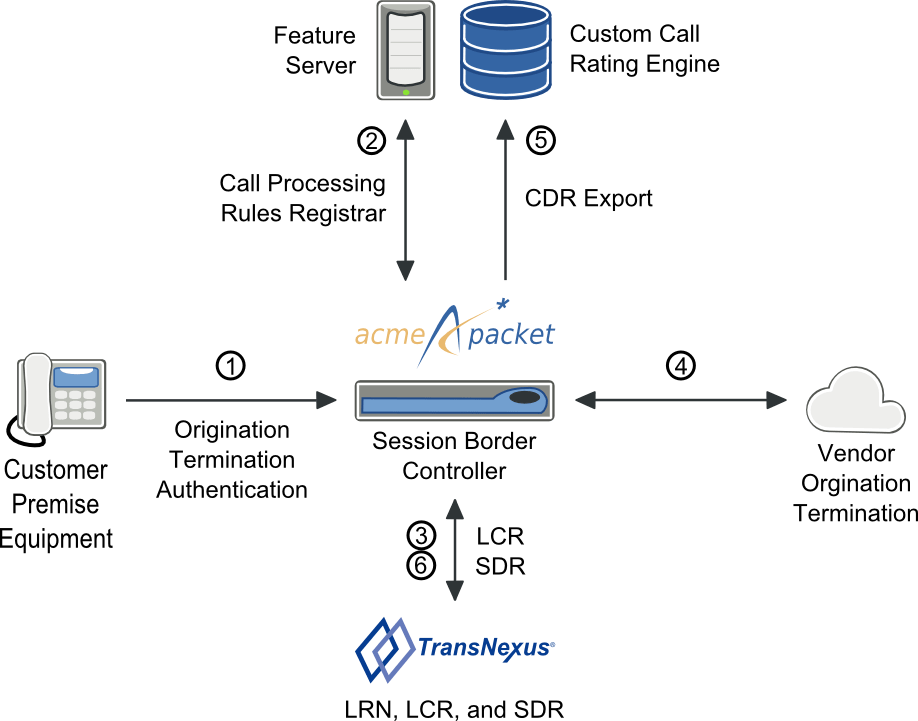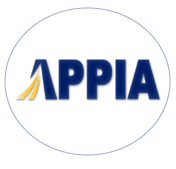Appia case study
The Challenge
Appia began to put together a new network designed to consolidate the hosted voice and SIP trunking services. “We wanted to increase our reliability. We wanted to increase our security, and we wanted to move where we had inter-session information” said Jay Cox, Director of Telecommunications Management at Appia.
Result
Appia selected the TransNexus solution for centralized network management of their hosted VoIP and SIP trunking services. In the new system, the Acme Packet SBC works as a border element, and all inbound and outbound traffic flows through it. Switching functionality is handled by a custom feature server platform, developed by Appia, that manages telephone numbers and customer features. The TransNexus software completes the solution with dynamic least cost routing and quality of service routing, traffic and quality of service reporting, fraud detection, and least cost routing.
Customer Take Away
“TransNexus helped us to increase our reliability and security. The TransNexus system is open on my desktop 24/7.”
“We wanted to increase our reliability. We wanted to increase our security, and we wanted to move where we had inter-session information”
About Appia Communications
Founded in 2001, Appia Communications is a leading provider of managed communication and network services, with a focus on small to midsize companies and organizations. Appia offers a complete range of communication services including hosted and SIP trunking-based VoIP, Internet access, wholesale VoIP, video conferencing, and network monitoring and management services. Headquartered in Traverse City, Michigan, Appia has operations in Atlanta, Chicago, Dallas, Indianapolis/Fort Wayne, Los Angeles, New York, St. Louis, San Francisco, and Washington, DC.
The Challenge
Appia’s hosted VoIP telephone services to customers has flourished since its 2001. Building on this success, Appia decided in 2011 to expand into the complimentary SIP trunking business. To do so, Appia acquired Voxitas, a VoIP and MPLS networking services provider. With the acquisition, Appia planned to provide a full range of voice products.
Starting from the ground up, Appia began to put together a new network designed to consolidate the hosted voice and SIP trunking services. “We wanted to increase our reliability. We wanted to increase our security, and we wanted to move where we had inter-session information” said Jay Cox, Director of Telecommunications Management at Appia.
The Solution
Appia selected Acme Packet Session Border Controllers (SBC) combined with the TransNexus Routing, Operations, and Billing Support System as the solution for centralized network management of their hosted VoIP and SIP trunking services. In the new system, the Acme Packet SBC works as a “border element,” and all inbound and outbound traffic flows through it. Switching functionality is handled by a custom feature server platform, developed by Appia, that manages telephone numbers and customer features. The TransNexus software completes the solution with dynamic least cost routing and quality of service routing, traffic and quality of service reporting, fraud detection, and least cost routing.
Appia chose the Acme Packet/TransNexus solution over their existing system because they needed better control over their SIP calling. “Acme Packet has better reliability to control the calls, proxy the media and collect quality of service statistics,” said Cox. “Then we use TransNexus to analyze the data. The TransNexus system is open on my desktop 24/7.”
The combination of the Acme Packet Session Border Controller and TransNexus also greatly increased the security of Appia’s platform. The SBC blocks network probes, and the TransNexus ROBBS system automatically detects customers who have been hacked and blocks suspicious call routes. “We live and die by our fraud detection reports” said Cox. Since implementing the new system, Appia has not had a single fraud event. “The TransNexus system is open on my desktop 24/7.”
How It Works
The TransNexus ROBSS system is made up of two products, NexOSS and the OSPrey routing server. The ROBSS system is a next generation dynamic least cost routing solution. Based on Appia’s customer and provider rates, VoIP devices, and trunk groups, NexOSS creates an optimized least cost routing table and pushes it to the OSPrey routing server.
When subscribers originate calls (1), the Acme Packet SBC queries the existing feature server (2) for call processing rules, then queries the TransNexus OSPrey routing server (3) for call routing information and completes the call using the lowest cost or best route (4). After the call is complete, the Acme Packet SBC sends Call Detail Records (CDRs) to a custom call rating engine (5) and to the TransNexus system (6).

The TransNexus system mediates and monitors the CDRs for fraudulent calls and quality of service (QoS) problems. If potential fraud or QoS issues are detected, the system generates alerts and can automatically update routing to block fraudulent calls or route around QoS issues. The TransNexus system also rates CDRs and generates profitability and billing reports.
